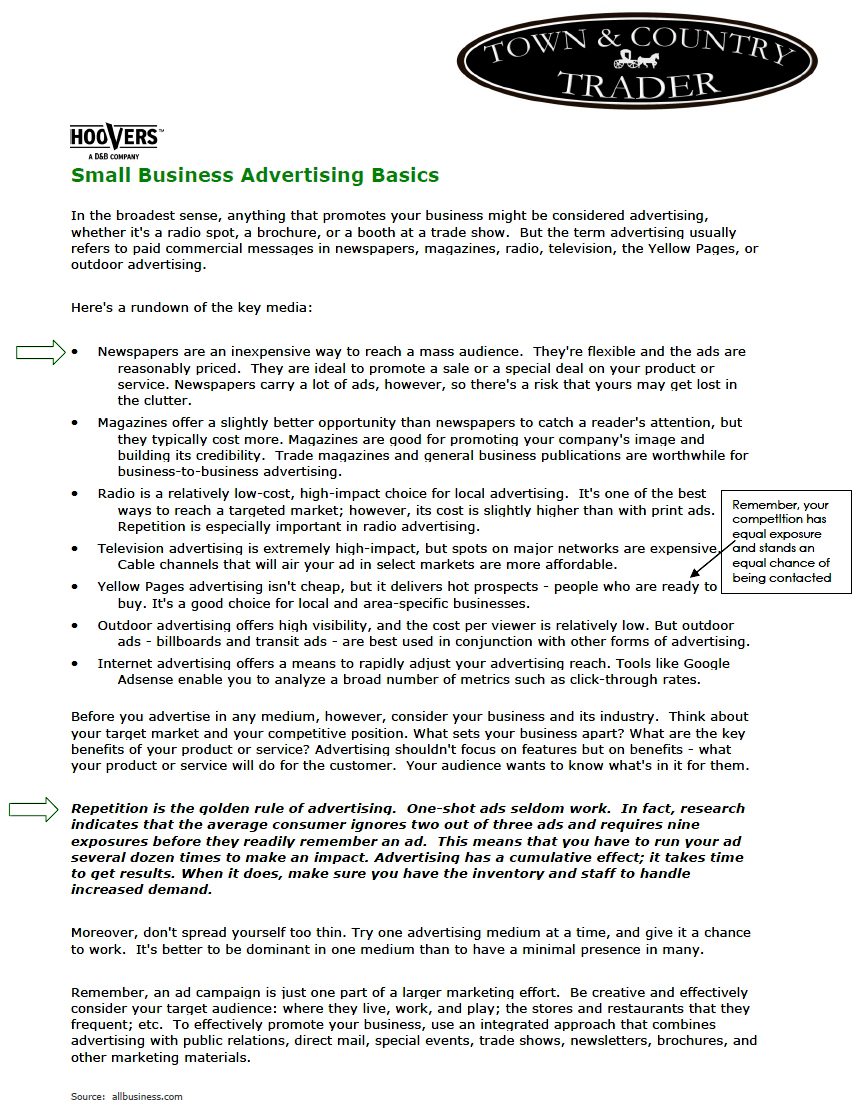
Small Business Advertising Basics
In the broadest sense, anything that promotes your business might be considered advertising, whether it’s a radio spot, a brochure, or a booth at a trade show. But the term advertising usually refers to paid commercial messages in newspapers, magazines, radio, television, the Yellow Pages, or outdoor advertising.Here’s a rundown of the key media:
- Newspapers are an inexpensive way to reach a mass audience. They’re flexible and the ads are reasonably priced. They are ideal to promote a sale or a special deal on your product or service. Newspapers carry a lot of ads, however, so there’s a risk that yours may get lost in the clutter.
- Magazines offer a slightly better opportunity than newspapers to catch a reader’s attention, but they typically cost more. Magazines are good for promoting your company’s image and building its credibility- Trade magazines and general business publications are worthwhile for business-to-business advertising.
- Radio is a relatively low-cost, high-impact choice for local advertising. It’s one of the best ways to reach a targeted market; however, its cost is slightly higher than with print ads. Repetition is especially important in radio advertising.
- Television advertising is extremely high-impact, but spots on major networks are expensive. Cable channels that will air your ad in select markets are more affordable.
- Yellow pages advertising isn’t cheap, but it delivers hot prospects – people who are ready to buy. It’s a good choice for local and area-specific businesses. Remember, your competition has equal exposure and stands an equal chance of being contacted.
- Outdoor advertising offers high visibility, and the cost per viewer is relatively low. But outdoor ads – billboards and transit ads – are best used in conjunction with other forms of advertising.
- Internet advertising offers a means to rapidly adjust your advertising reach. Tools like Google Adsense enable you to analyze a broad number of metrics such as click-through rates.
Repetition is the golden rule of advertising. One-shot ads seldom work. In fact, research indicates that the average consumer ignores two out of three ads and requires nine exposures before they readily remember an ad. This means that you have to run your ad several dozen times to make an impact. Advertising has a cumulative effect; it takes time to get results. When it does, make sure you have the inventory and staff to handle increased demand.
Moreover, don’t spread yourself too thin. Try one advertising medium at a time, and give it a chance to work. It’s better to be dominant in one medium than to have a minimal presence in many.
Remember, an ad campaign is just one part of a larger marketing effort. Be creative and effectively consider your target audience: where they live, work, and play; the stores and restaurants that they frequent; etc. To effectively promote your business, use an integrated approach that combines advertising with public relations, direct mail, special events, trade shows, newsletters, brochures, and other marketing materials.
Source: allbusiness.com
